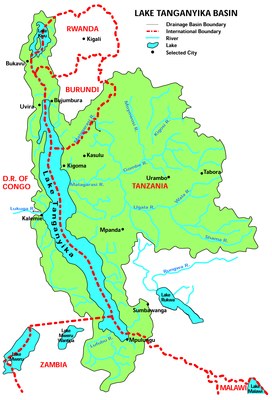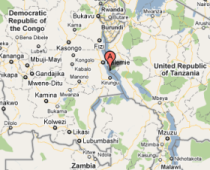The physics of the warming of Lake Tanganyika by climate change
 Climate warming over the 20th century has increased the density stratification and stability of Lake Tanganyika, a deep rift valley lake. Here we examine the physical processes involved in and affected by the warming of the lake, and we discuss effects on lake productivity.
Climate warming over the 20th century has increased the density stratification and stability of Lake Tanganyika, a deep rift valley lake. Here we examine the physical processes involved in and affected by the warming of the lake, and we discuss effects on lake productivity.
The rate of net heat absorption by Lake Tanganyika has been 0.4 W m super (-2) since 1913, twice the rate in the global ocean, indicating stronger climate forcing in the East African region. Lakes warm through increased incoming long-wave radiation. While lakes in general will increase heat outputs in a warming climate, heat outputs will increase more slowly in deeper lakes than in shallower lakes. Temperatures have increased by 0.2 degree C at 1000 m in depth, in part because of reduced cool marginal inflows, while water surface temperatures have increased by about 1.3 degree C.
This differential heating over depth has increased the density gradient through the water column, reducing the potential for vertical mixing and thereby limiting nutrient fluxes to the phototrophic zone. An increase in transparency, indicating a reduction in productivity as a result of the reduced vertical mixing, occurred both in Lake Tanganyika and in Lake Malawi, a similar deep tropical lake in which warming has also been documented.
Source : Limnology and Oceanography [Limnol. Oceanogr.]. Vol. 54, no. 6, pp. 2418-2430. 2009.
Document Actions













